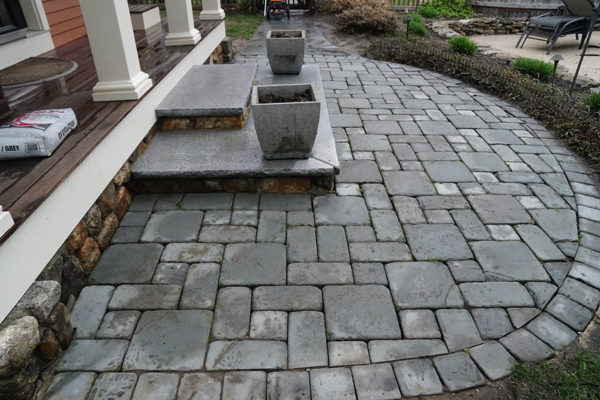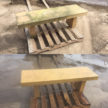Cleaning a Bluestone Patio
How to Clean Bluestone
Many homes have concrete and blue-stone walkways, steps and patios. The problem is leaves, pollen and rust stains that develop can very difficult to remove. This article will address using a pressure washer as best practice for cleaning a Bluestone patio.

Use A Pressure Washer
The most effective and safe cleaning method to remove dirt and residue is with a pressure washer. Using a pressure washing eliminates the need for a manual scrubbing with a brush and pole.
For this project we used the Generac 3200 PSI with electric Start. Click link to read our tool review or here to purchase: Generac-SpeedWash-7122-Pressure-Attachments
Cleaning Other Masonry
People will often ask if a pressure washer can be used to clean other types of masonry. That answer is yes, it’s a great cleaning tool for may surfaces such as;
- Granite steps
- Granite posts
- Pool Deck
- Fiend Stone
- Pavement
- Concrete
We recently used same procedure to clean Granite steps, posts, curbing or other structures.
What You’ll Need
- Bucket – optional
- Water – optional
- Dish soap or liquid stone cleaner for the pressure washer – optional
- Soft scrub brush with extension pole – optional
- Pressure washer or hose with sidewalk sweep nozzle
- Blower or broom
Cleaning a Bluestone Patio – Procedure
- Remove loose dirt, leaves and debris
- Pull any weeds growing in the paver joints – pressure washer can do this
- Wet granite
- Apply cleaner if applicable
- Clean patio – use brush too scrub or pressure washer
- Work in small sections to keep track of your cleaning pattern
- Repeat until the entire surface is clean.
- Allow either to air dry
Note – when using a pressure washer choose the nozzle that gives you the best cleaning based on time and effort. Use a back and forth pattern to create an even clean look.
Add Sand To Paver Joints
After cleaning a Bluestone patio you will need to refill the paver joints as the power swasher will wash a lot of it away.
The BEST sand to use on patios, walkways or pavers is Polymeric sand is designed to harden after wetting. Once hard it stays in place for a long time, resisting weed growth and helping to hold pavers in place.
Before applying the sand, the space between patio stones needs to be cleaned out and weed free. I recommend washing the patio with a pressure washer and using the pressure washer to clean out the joints at the same time.
Sweep more sand into the joints until the sand is within 1/8” of the top of the paver. Use a broom or leaf blower to clean off excess dust.
Why Is Wetting Polymeric Sand Necessary?
The wetting process with polymeric sand is necessary to start its hardening process. You need to add enough water to saturate the sand but not so much that you float the polymers out of the sand. The most effective way to water the sand is to adjust the nozzle to a light spray pattern. Water the paver joints until no more water will soak in. Once you wet the sand, the polymer in the sand will begin to set and harden. Read more on using Polymeric sand to recondition a patio here.














